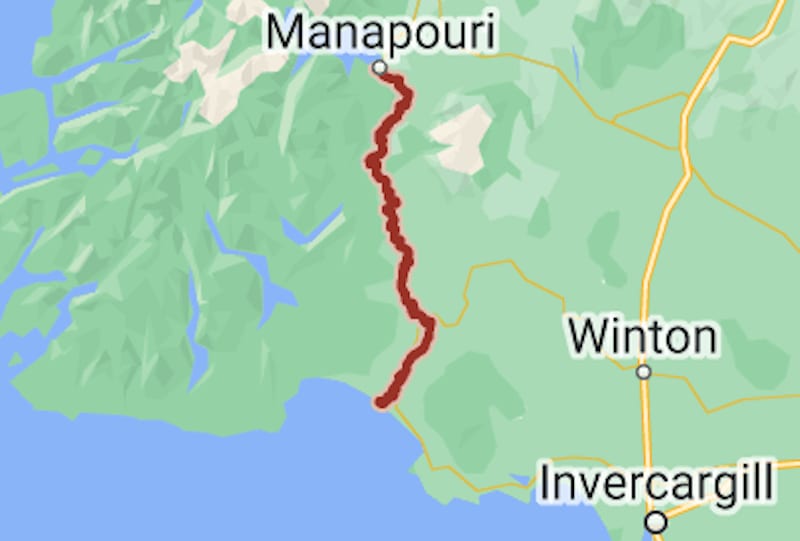
The Waiau River has paid an enormous environmental price to power the Tiwai Pt aluminium smelter. But the Lake Onslow pumped-hydro scheme could restore this once-mighty Southland river to its former glory
Opinion: The Waiau River in Southland was once New Zealand’s second-largest after the Clutha/Mata-Au River, and one of the country’s cleanest.
All that changed 50 years ago when most of the water flowing from its native forest-covered catchment into Lake Manapouri, was diverted into the Manapouri Power Station.
The Waiau remains the largest river system in a vast, high rainfall area across the south-western corner of the South Island. It flows south from Lake Te Anau into Lake Manapouri, then onward for 70km before emptying into Foveaux Strait near Tuatapere.
When the power station was built the outflow was directed into Doubtful Sound, where previously all that water had discharged naturally into the Waiau River.
The diversion resulted in a dramatic reduction – close to 80% – in water flow along the 217km of the Waiau, downstream from Lake Manapouri.
The mean flow of the lower Waiau before diversion was a huge 450 cubic metres per sec. After diversion the summer flow reduced to less than 60 cubic metres per second, for more than 50 percent of the time.

Apart from the visual impact of the effective destruction of the former mighty Waiau River, there is a risk of water quality decline as well. This is because the reduced volume of high-quality water discharging from Lake Manapouri no longer provides the same level of dilution of the lower quality water from tributary flows coming from agricultural catchments to the east.
Without the dilution effect, the resulting relatively high nutrient concentrations combined with high water temperatures can result in blooms of toxic cyanobacteria in the river.
In the summer of 2019 the Southland Regional Council issued a warning that tourists on the Waiau River should avoid skin contact with the water.
There have been suggestions that Meridian (operators of the Manapouri Power station) could send down flushing flows of Lake Manapouri water from time to time. However, a more permanent solution is needed.
Pumped hydro has its environment costs
The government is exploring new energy options through its $100 million NZ Battery Project studies.
At Lake Onslow near Roxburgh in Central Otago, a proposed pumped-storage scheme would have a significant cost if it proceeds, both in terms of its construction and its environmental impact though flooding wetlands.
The argument for the construction cost is that it is a net national good, paving the way for the green transition by supporting wind power development and giving security against dry years with 100 percent renewable electricity output.
However, little has been said about possible regional environmental gains that could provide a degree of offset to the wetlands loss.
Save Manapouri – and Waiau
The large storage capacity at Onslow (more than all the existing NZ hydro lake storage capacity combined) enables the possibility of regional environmental improvements that could never have been previously contemplated.
In particular, there is now a possibility for partial restoration of the Waiau River, which has suffered massive environmental impact through the diversion of most of its flow into the Manapouri Power Station to provide electricity for the Tiwai Point aluminium smelter.
The Save Manapouri campaign was only a partial environmental victory because the protection achieved for the lake did not extend to the Waiau River.
Given the likelihood of the smelter staying operative after 2024, some of its power could be provided instead by the new wind farms in southern Southland and Foveaux Strait, which has been identified as New Zealand’s largest wind energy resource.
Restoring the Waiau River to half of its previous discharge at low flow could be achieved by increasing its minimum flow to 125 cubic metres per second of water discharging from Lake Manapouri into the river.
This would involve setting aside two of the seven generators at the Manapouri Power Station for use only in emergencies or in conditions of high flows into Lake Manapouri.
The power reduction from the Manapouri Power Station to the smelter would be about 170 MW, which could be supplied to the smelter by an expansion of the planned Southland wind farms.
Wind farms have their own environmental impact but the argument is that getting back the Waiau River would be worth it.
What is the price?
There are two obstacles to this Waiau River concept. Firstly, Meridian would lose income from the reduction in power from the Manapouri Power Station.
An appeal would have to be made to their sense of corporate good citizenship to agree to some income loss in return for a significant environmental gain to the local community.
Secondly the intermittent nature of wind power does not match the smelter’s requirement for a steady power supply and this is where Onslow pumped storage plays a critical role.
With as much as 1,500 MW of generating capacity and 5,000 GWh of energy storage, Onslow would be well placed to buffer the fluctuating power output from the large Southland wind farms.
Onslow would also serve to buffer dry years so that full aluminium output could be maintained though climatic variations. This would be of commercial advantage to the Tiwai smelter and a case could be made that Rio Tinto might consider contributing to the cost of building the pumped storage scheme.
The development of Southland and Foveaux Strait wind power would be of such an extent that only a portion of its output would go to aluminium smelting, the rest finding use locally as both 100 percent renewable and reliable through dry years.
This renewable/reliable combination will be attractive to overseas industries and it is likely that Southland and Otago will see immediate increased interest if a decision is announced for Onslow pumped storage construction to go ahead.
Another environmental gain that has received little attention is that the Onslow operation would increase the spring and summer flows of the lower Waitaki River, aiding water quality and recreational use.
This shift back toward the river’s original natural seasonal flow regime would arise from Onslow pumping at times of low power prices, with spring and summer water released for power generation from Lakes Tekapo and Pukaki.







